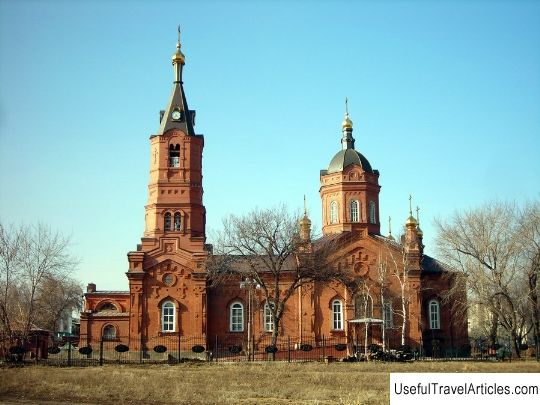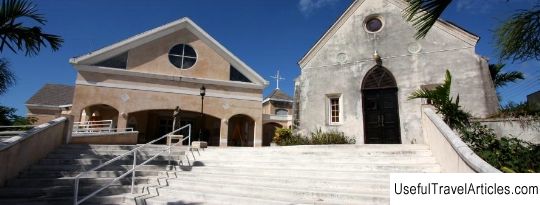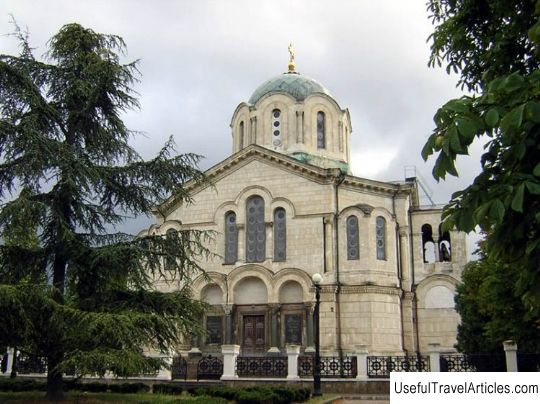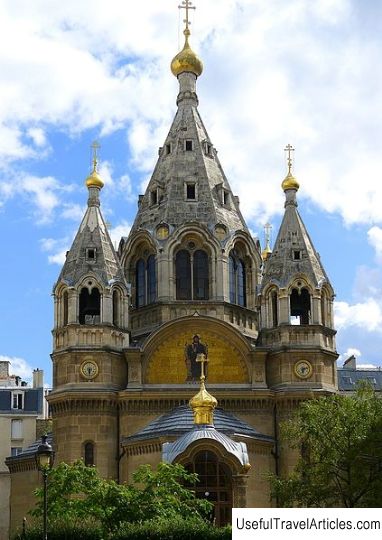Alexander Nevsky Cathedral (Aleksander Nevski katedraal) description and photos - Estonia: Tallinn
Rating: 8,5/10 (1433 votes) 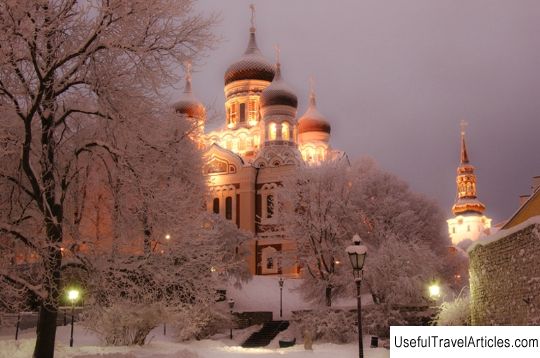
Alexander Nevski Cathedral (Aleksander Nevski katedraal) description and photos - Estonia: Tallinn. Detailed information about the attraction. Description, photographs and a map showing the nearest significant objects. The title in English is Aleksander Nevski katedraal. Photo and descriptionBy the end of the 19th century, the increase in the number of the Orthodox population required the construction of a new Orthodox cathedral. The Transfiguration Church existing at that time became cramped for an increasing number of parishioners, and besides, its location was not entirely convenient. Prince Sergei Vladimirovich Shakhovskoy, who in 1885 was appointed governor of Estonia, initiated the construction of an Orthodox church and received permission to raise funds to implement this idea. Donations for construction came here from all over Russia. As a result, by September 15, 1899, a sufficient amount was collected for the construction of the temple. It was decided to dedicate the Cathedral to the Holy Blessed Prince Alexander Nevsky, in honor of the extraordinary salvation of Tsar Alexander III and his family during a terrible train wreck. which happened on October 17, 1888. The site for the construction of the future temple was carefully chosen. Of the eight proposed options, we stopped at the square in front of the governor's palace on Vyshgorod. In August 1893, a solemn ceremony was held to consecrate the site for the future cathedral. The miraculous icon of the Dormition of the Mother of God, delivered from the Pukhtitsa Monastery, was brought to the ceremony. The project of the cathedral was prepared by the academician of architecture Mikhail Timofeevich Preobrazhensky, a specialist in church buildings, a member of the St. Petersburg Academy of Arts. Initially, the project provided for the installation of a marble iconostasis, but during construction it was decided to replace it with a wooden gilded one. The icons were painted in the studio of the academician of painting Alexander Nikanorovich Novoskoltsev. Based on his own sketches, the Petersburg master Emil Karlovich Steinke made stained glass windows, which were installed in the altar windows of the main chapel. The bells were made in St. Petersburg at the bell factory of the merchant Vasily Mikhailovich Orlov. The cathedral is ringing 11 bells. Various images and inscriptions are cast on the bells. The result of the construction was a three-altar temple, modeled on the 17th century Moscow churches, with a capacity of about 1,500 people. The facades of the cathedral were decorated with mosaic panels made by the academician of architecture A.N. Frolov. The ceremony of solemn consecration of the Cathedral in the name of the Blessed Prince Alexander Nevsky took place on April 30, 1900, which was conducted by His Grace Agafangel, Bishop of Riga and Mitava. The ceremony was also attended by St. right. about. John of Kronstadt. In the early 1920s, it was decided to demolish the temple as a "monument to Russian violence." Estonia has even begun to raise funds to implement this decision. At the end of 1928, a bill was introduced to demolish the Alexander Nevsky Cathedral. The temple was defended by the forces of the world Orthodox community. During the Second World War, the cathedral was closed and the question of its demolition was raised again. In the 60s, they wanted to convert this cathedral into a planetarium. The young Bishop of Tallinn and Estonia Alexy, the future Most Holy Patriarch of Moscow and All Russia Alexy II, managed to save the Alexander Nevsky Cathedral from rebuilding. In 1999, as a sign of special patronage, the Tallinn Cathedral of Alexander Nevsky was given stauropegic status, which means the direct subordination of the temple to the Patriarch of Moscow and All Russia.         We also recommend reading Mount of Beatitudes (Horns of Hattin) description and photos - Israel: Tiberias Topic: Alexander Nevsky Cathedral (Aleksander Nevski katedraal) description and photos - Estonia: Tallinn. |

